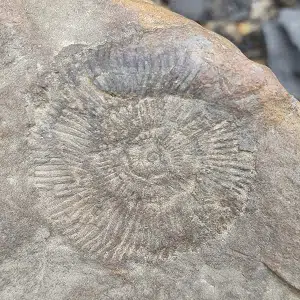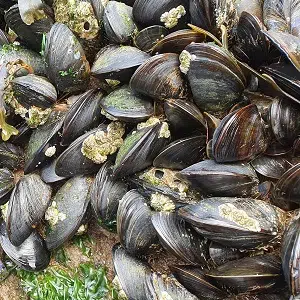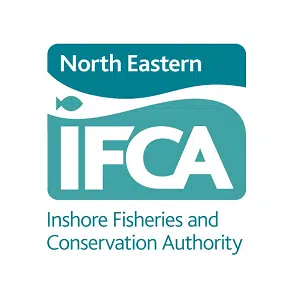Runswick Bay MCZ is protected for its rocky shores and sediments, creating rich habitats for marine wildlife
The rock and sediments within the Runswick Bay MCZ create complex habitats for a range of marine wildlife. As the tide recedes, extensive rocky shore communities are revealed, with large kelps and seaweeds towards the lower shore.
In deeper waters, the sandy seabed interspersed with rocks and boulders, provides perfect habitat for commerically-important crabs, lobsters and numerous fish species. The ocean quahog, a cockle shaped bivalve which can live for hundreds of years, is also found within the site.
Map of MCZHow is the MCZ managed?
The protected features of the MCZ are primarily intertidal or subtidal habitats, with the exception of the Ocean Quahog which lives amongst the subtidal rocks and sediment. The MCZ extends 3 nautical miles offshore, which means the majority of activities within the site are fisheries related. Inshore fisheries are already managed by the North Eastern Inshore Fisheries and Conservation Authority (NEIFCA), including catch limits, methods and seasons of fishing and, specifically, a no-trawl area which is aligned with the MCZ boundaries. As a result, no additional management is currently required for the subtidal elements of the site. On the terrestrial side, the local authority (Scarborough Borough Council) manages the changing coastline in line with the Shoreline Management Plan. Natural England also produces Conservation Advice for the MCZ, and various national regulations are in place to assess any impacts of local developments on the site’s features. Recently, these regulations allowed the local authority to trial adding innovative ecological enhancements to new sea defences within the MCZ. These enhancements helped to compensate for any local reduction of intertidal habitat.
This activity-specific management works to reduce any negative impacts on the site, however the MCZ is also considered by the YMNP’s Marine Protected Area (MPA) Management Group. This group works to ensure that Yorkshire’s MPAs are managed appropriately, and that each protected area is considered both individually and on an ecosystem-scale. By working collaboratively, we can share our ideas and knowledge across the region, which helps to make sure that any management issues are dealt with effectively and consistently.
Runswick Bay EnhancementsFeatures of the MCZ
Runswick bay MCZ was designated for the excellent examples of intertidal and subtidal habitats within the site, which support a variety of life. The rocky shoreline is home to limpets, barnacles and starfish which live amongst the diverse seaweeds and kelp. Further offshore, crabs and lobsters roam the seabed whilst groups of shoaling fish swim above.
The images below, taken during a survey of the site by the Environment Agency in 2015, provides a glimpse into this underwater world, where a wide range of species, from Cuckoo Ray and Squat Lobster to Sea Urchins and Dead Man’s Fingers, can be found.
MCZ FactsheetLinked projects and further information…



